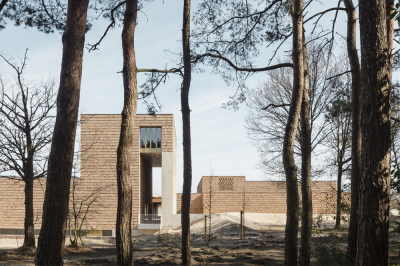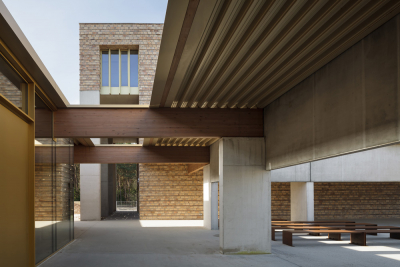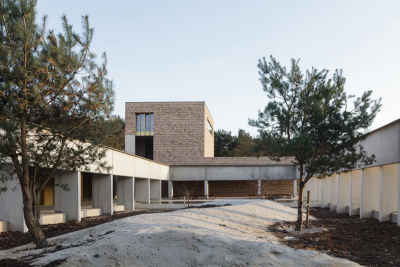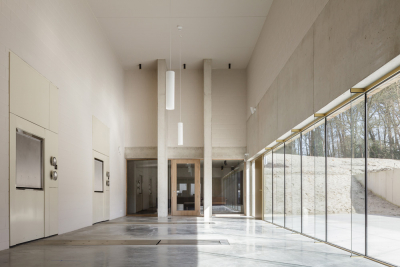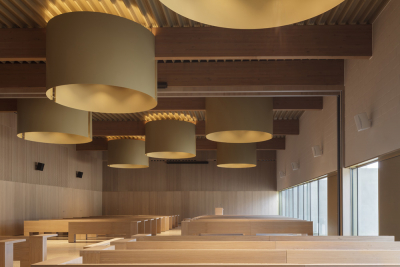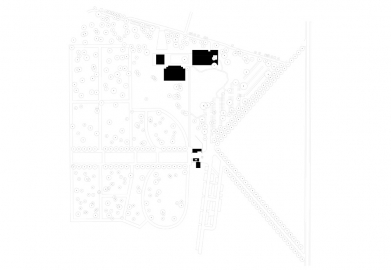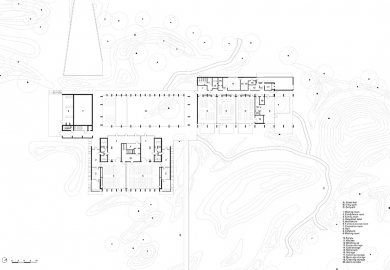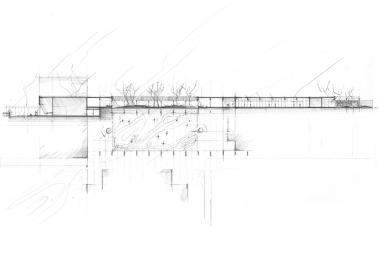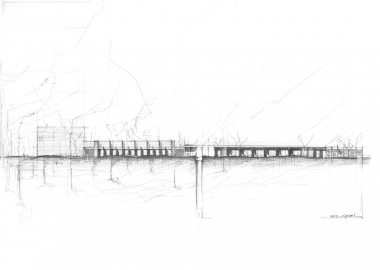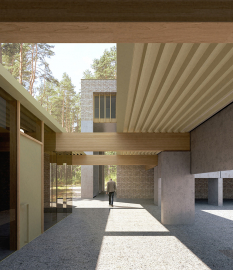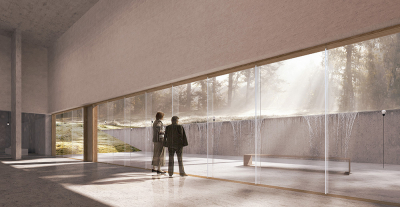Crematorium Stuifduin
Crematorium Stuifduin concerns a new crematorium building on a site alongside the main cemetery of Lommel (BE). More than a building, the crematorium is a site that accompanies one on the journey of farewell. As religious symbolism is no longer relevant to everyone, Stuifduin explores an attitude towards the potential of landscape as an alternative.
Situated in a unique location, the landscape design is characterised by the search for an untouched "primordial landscape". A restoration project will be initiated, aimed at recreating the natural balance between pine woods, heathland and sandy landscape.
The answer formulated to the typological issue lays in dissecting the programme into three buildings. Three spaces – a technical one, a sacral one and a convivial one – embracing a fourth interspace, a place for peace and contemplation.
The unity, intrinsically within the design as well as with its environment, is due to the coherent design language and a systematically simple use of materials. The soberness of the materiality testifies to resilience and sincerity. No aestheticizing materials, but honesty, robustness and soberness.
One of the main themes in the design is 'the journey'. The ceremonial rite that is typical of saying farewell to a loved one.
Crematorium Stuifduin does not translate the ideological neutrality into the complete absence of ritual and symbolic elements, but into the multi-interpretability and universality of architectural symbolism, into the context of the landscape and association.
A building that is easily absorbed by the surrounding nature, but remains upright thanks to its strong backbone, and thus constitutes the next link to the typological research of what a crematorium should and can be.
The complexity of the project concerns in particular the almost impossible combination of a ceremonial space with sacral ambitions where people experience a fundamental moment in their circle of family or friends, and a high-tech machine that is subject to strict regulations.
Physical taking the building programme apart, makes of Crematorium Stuifduin a collection of spaces and turns circulation into a procession. It reminds of the ceremonial cortège of those attending a funeral, or, in a more existential way, to the walk of life itself.
Statie Stuifduin exhibits itself as a ruin that has been made functional. The radical concrete structure is partly filled with glass and brickwork. Wooden beams are partly covered with profiled roof cladding. The golden colour of the roof plates made of corrugated steel.
Dust and moss thrive on the brick patterns. The surrounding nature enters through the many views.
The choice was made to use materials that exude robustness and can stand the ravages of time without effort. Brickwork, concrete and wood extend from the interior to the exterior. Wafer-thin sheets of glass protect the interior. An intelligent heat recovery system foresees in the energy demand of the whole site. The building will have the appearance of a ruin that happens to have been turned into a crematorium and could even be reimagined for a different future use.
The radical measurements and unusual dimensions of concrete, brick and laminated wooden beams. Everyday products are lifted to a sublimated level. Common and economical interesting tools lead to uncommon solutions.

